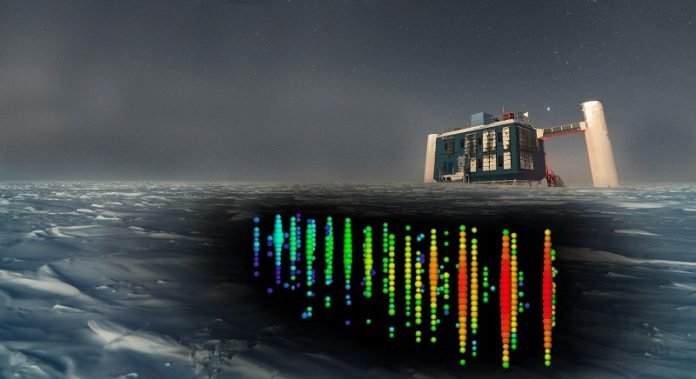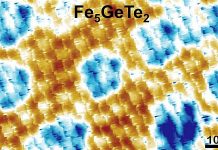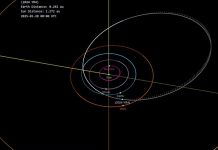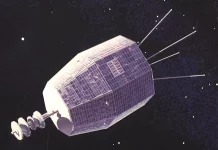
In a remote corner of the world, buried deep in the icy expanse near the South Pole, lies a unique observatory unlike any other.
This isn’t your typical telescope gazing at stars; instead, it’s a sprawling network of sensors spread across a square kilometer of ice, designed to catch something far more elusive than light: neutrinos.
Neutrinos are mysterious particles that zoom through space, barely interacting with anything.
They have no electrical charge and are almost without mass, making them incredibly difficult to detect.
Yet, these ghostly particles might hold the key to one of the biggest puzzles in physics: the existence of quantum gravity.
Scientists from the Niels Bohr Institute, alongside international colleagues, are on a mission to find out if quantum gravity, a theory that would bridge the gap between the large-scale phenomena of gravity and the bizarre, microscopic world of quantum mechanics, is real.
This quest could revolutionize our understanding of the universe, merging the realms of the very large and the very small into a unified picture.
At the heart of this adventure is the IceCube Neutrino Observatory.
Unlike telescopes that peer into the sky, IceCube looks through the Earth, using the planet itself as a giant filter to catch neutrinos from the northern hemisphere with unparalleled clarity.
This setup makes IceCube a perfect neutrino catcher, providing a clear signal from these enigmatic particles.
The focus on neutrinos from Earth’s atmosphere, rather than those from deep space, might seem like a detour.
However, these nearer neutrinos are far more plentiful, making them ideal candidates to test and refine the researchers’ innovative methods.
With over 300,000 atmospheric neutrinos studied, the team is now poised to take their research to the next level, aiming to observe neutrinos from the far reaches of the universe.
Neutrinos are fascinating for another reason: they come in three “flavors” and can transform from one to another in a process known as oscillation.
This quantum quirk, observable over thousands of kilometers, could be disrupted by quantum gravity.
If the team detects such disturbances, it would be the first direct evidence that quantum gravity is real.
Yet, the quest is challenging. The preliminary findings didn’t show the expected signs of quantum gravity, but this isn’t a setback.
It simply means that the distances covered by atmospheric neutrinos—though they traverse the entire Earth—are too short for quantum gravity effects to be noticeable. The hunt, therefore, must aim further, looking at neutrinos traveling from cosmic distances.
This research isn’t just about proving a theory; it’s about pushing the boundaries of what’s experimentally possible.
For years, the idea of testing quantum gravity seemed out of reach. Now, thanks to the perseverance and ingenuity of these scientists, we’re on the cusp of potentially making scientific history.
As the IceCube Observatory continues its watch and as future detectors come online, the dream of unveiling quantum gravity becomes increasingly tangible.
This isn’t just a story of particles and theories; it’s a testament to human curiosity and our relentless pursuit of knowledge, reaching from the icy desolation of the South Pole to the furthest corners of the cosmos.
The scientific article can be found in Nature Physics.
Source: University of Copenhagen.



